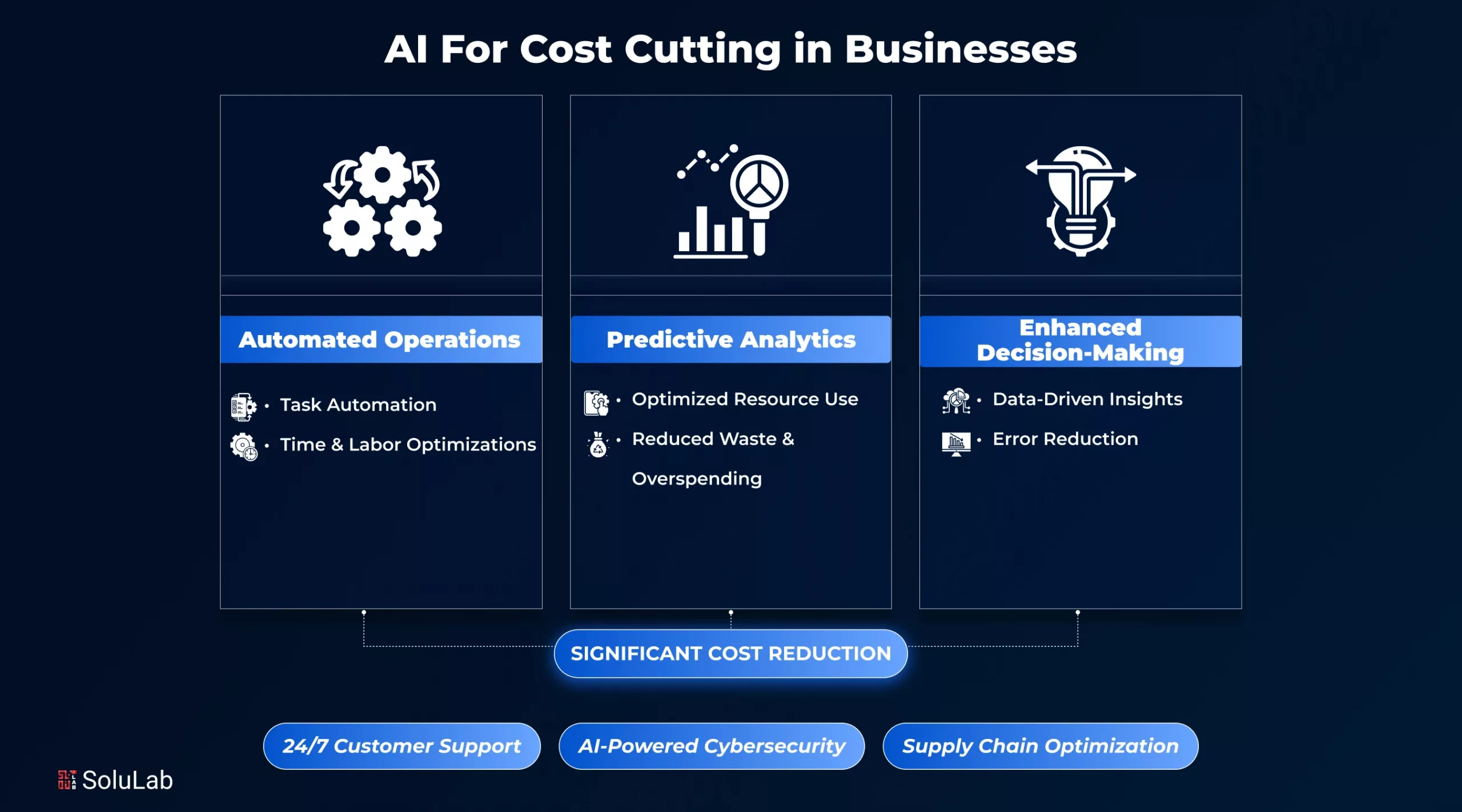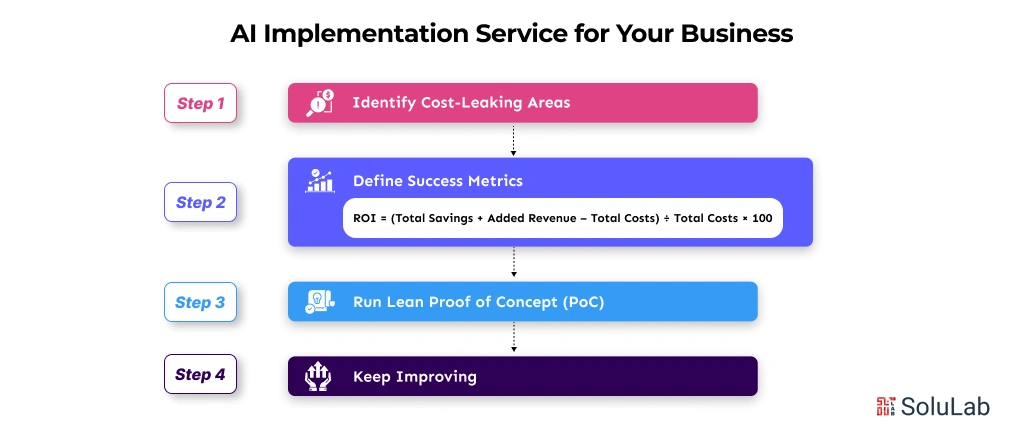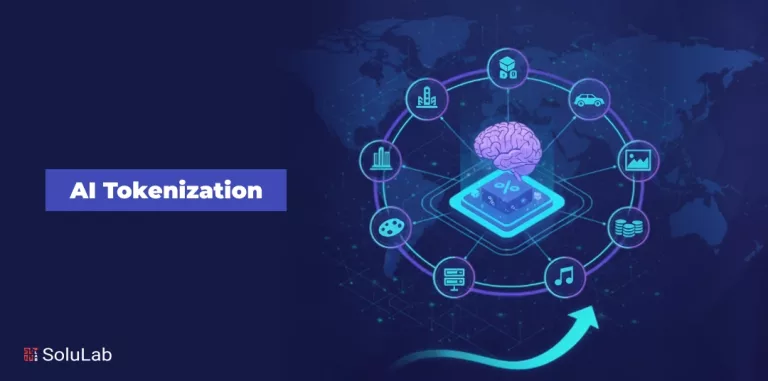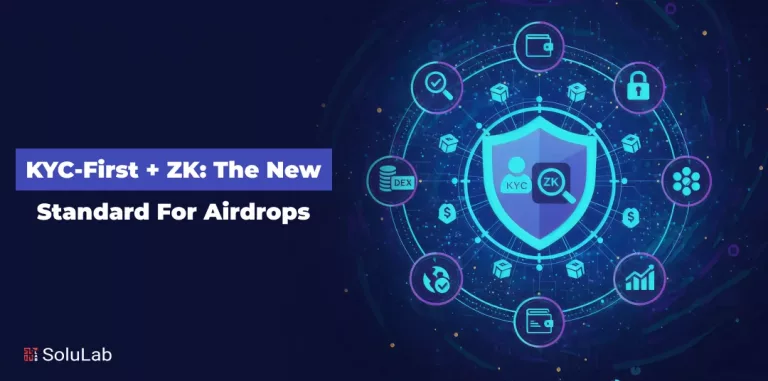
Artificial Intelligence is not just an idea; it is shaping the world economy. AI is not just about automating a few tasks; it’s about innovation, data usage, and learning algorithms. This helps your business grow efficiently.
Today, over 90% of business executives expect AI to play a major role in AI-powered cost optimization. In the coming months, AI cost-saving solutions are going to take a new turn. And the proof is visible: enterprises are already reporting 5% to 20% savings, sometimes even more.
But before you dive into this technology, one question comes up: how much does it really cost to implement AI, and how fast does it pay back? Let’s find out.
Why Businesses Are Turning to AI for Cost Reduction?
AI doesn’t just cut costs, it changes how you manage them. From MNCs to enterprises using AI cost-saving solutions to speed up work and decision-making.
The major reason why AI in business works well is its ability to process massive data in seconds. Either e-commerce or manufacturing AI is playing its role quite efficiently. AI keeps learning predictive maintenance and supply chain management. Hence, in the near future, AI cost savings solutions for enterprises are going to evolve.
Another big advantage? Prevention. Instead of waiting for a problem to happen, Artificial Intelligence spots early warning signs, saving repair, rework, and penalty costs. Think of it as a smart assistant that helps you act before expenses spiral.
In short, AI cost reduction best practices focus on three things:
1. Automating repetitive work to save labor costs.
2. Predicting issues to avoid downtime and waste.
3. Using real-time data to make smarter financial decisions.
That’s why leading companies now see AI as a strategic investment, not just a technology upgrade.
How Much Does It Cost to Implement AI in Your System?
Before expecting results, it’s important to understand the AI implementation cost. Prices can vary a lot depending on the size, complexity, and goals of your project.
- Simple AI tools or APIs (like chatbots or analytics add-ons): $2,000 to $40,000
- Custom enterprise AI systems (built for your business needs): $25,000 to $500,000+
- Hybrid models (mix of both): ideal for most mid-sized companies looking for balance
Your industry also affects the cost. For example:
- Healthcare and finance projects cost more due to strict data regulations and privacy requirements.
- Retail, customer support, and logistics projects are faster and cheaper to deploy. However, they have large data sets to maintain, so upgrades are needed.
Other key cost drivers include:
- Data preparation: Cleaning and labeling data can consume up to 20 to 30% of the total cost.
- Infrastructure: Cloud AI is flexible, but on-premises might be needed for compliance.
- Talent: Hiring AI engineers or outsourcing impacts budgets heavily.
- Maintenance: Retraining models and monitoring accuracy require ongoing investment.
Still, when you compare AI cost-benefit analysis, the numbers make sense. Most businesses see ROI of AI automation within 12–18 months, sometimes even faster.
For example, Deloitte found experienced adopters achieve an average 4.3% ROI in the first year, while Microsoft reports $3.70 return for every $1 spent on AI at scale. That’s proof that when planned right, AI pays for itself.
Which Business Areas Gain the Most Cost Savings from AI?

AI cost savings go beyond one industry and one department. Its impact is diverse from operations to finance and R&D. Let’s check where AI cost optimization is max.
1. Supply Chain and Operations
Smart algorithms can reduce inventory waste, predict demand, and plan logistics better.
- Predictive analytics can save 10-20% in logistics costs.
- One global e-commerce company used AI to cut supply chain expenses by $500,000 annually.
2. Labor and Process Automation
AI-powered automation helps businesses save on labor by taking care of repetitive work.
For example, virtual assistants handling customer queries can cut support costs by 30–40%, while also improving customer satisfaction.
3. Manufacturing and Predictive Maintenance
AI-driven maintenance detects equipment faults before breakdowns.
- Predictive maintenance can reduce repair costs by 30-40%.
- One auto parts manufacturer saved $275,000 yearly using real-time AI monitoring.
4. Software Engineering and R&D
AI tools can write, test, and debug code faster, cutting human errors and development costs. However, human checking is needed, but it can improve the delivery speed and reduce the manpower.
In R&D, AI scans large data sets to find promising ideas, helping teams bring new products to market up to 40% faster.
5. Customer Service and Marketing
AI chatbots and analytics reduce service center load. For instance, Australian insurer nib Group saved $22 million by automating 4 million customer interactions with AI.
When you add it all up, even a 10% cost drop or 5% revenue boost can create a six-figure impact in enterprise budgets.
Plan a Cost-Effective AI Implementation Service for Your Business

AI implementation services require expertise and, data-driven plan. Therefore, you can go for third-party AI development companies that provide maintenance and integrations. For now, let’s check the AI cost-effective implementation.
Step 1: Identify Cost-Leaking Areas
Start with your business audit. Ask: Where do we lose money or time most often? It might be in logistics delays, repetitive admin work, or manual data entry. Focus on areas with measurable KPIs like “cost per transaction” or “time per ticket.”
Step 2: Define Success Metrics
Without numbers, you can’t prove savings. Set clear goals: for example, “reduce support costs by 20%” or “save 1,000 labor hours per month.” This becomes your AI investment planning checklist before development begins.
Step 3: Run a Lean Proof of Concept (PoC)
Start small, one workflow, one use case. For example, automate refund approvals or ticket triaging. Once it delivers results, reuse the same AI components for other tasks. This keeps costs predictable and scalable.
A simple ROI formula to track:
ROI = (Total Savings + Added Revenue – Total Costs) ÷ Total Costs × 100
Example:
A chatbot automates 27,000 interactions in a quarter, saving $4 per case and earning $10,000 in extra sales.
Setup cost: $25,000. ROI = ((108,000 + 10,000 – 25,000) ÷ 25,000) × 100 = 372% ROI in three months.
Step 4: Keep Improving
AI is not a one-time project. Track performance monthly, refine models, and retrain as needed. Set feedback loops with your teams and ensure data quality stays high. This continuous improvement approach ensures sustainable AI cost savings solutions for enterprises.
Conclusion
Now you know how AI reduces costs for your business. There are different plans and strategies to cut your expenses; AI implementation solutions are the top-notch among them. So, if you are looking for AI cost savings solutions, SoluLab is here to offer them.
SoluLab, a top AI development company, offers our future-ready AI solutions that can boost your business and reduce costs. We have been assisting organizations in using the most recent AI tools and technologies to accomplish exponential growth.
If you set your goal to implement AI in your system, then contact us today and have a brief call with our consultant.
FAQs
1. Can AI really think beyond automation and help my business make smarter money decisions?
Yes! AI goes beyond automation by identifying inefficiencies and predicting expenses, helping with AI for business cost optimization that supports smarter, data-driven financial decisions every day.
2. How do I know if AI is worth the investment for my company?
Do a simple AI cost-benefit analysis, compare your automation savings against implementation costs. If results show savings within 12-18 months, your AI investment is absolutely worth it.
3. What’s the best first step for companies new to AI?
Start small with one measurable AI use case. Test automation through AI implementation services or a short Proof of Concept (PoC) to see fast, low-risk cost savings.
4. Why should I choose SoluLab for my AI implementation?
SoluLab combines strategy, technology, and measurable results. Our experts design custom AI solutions that focus on ROI, scalability, and long-term savings for your business.






